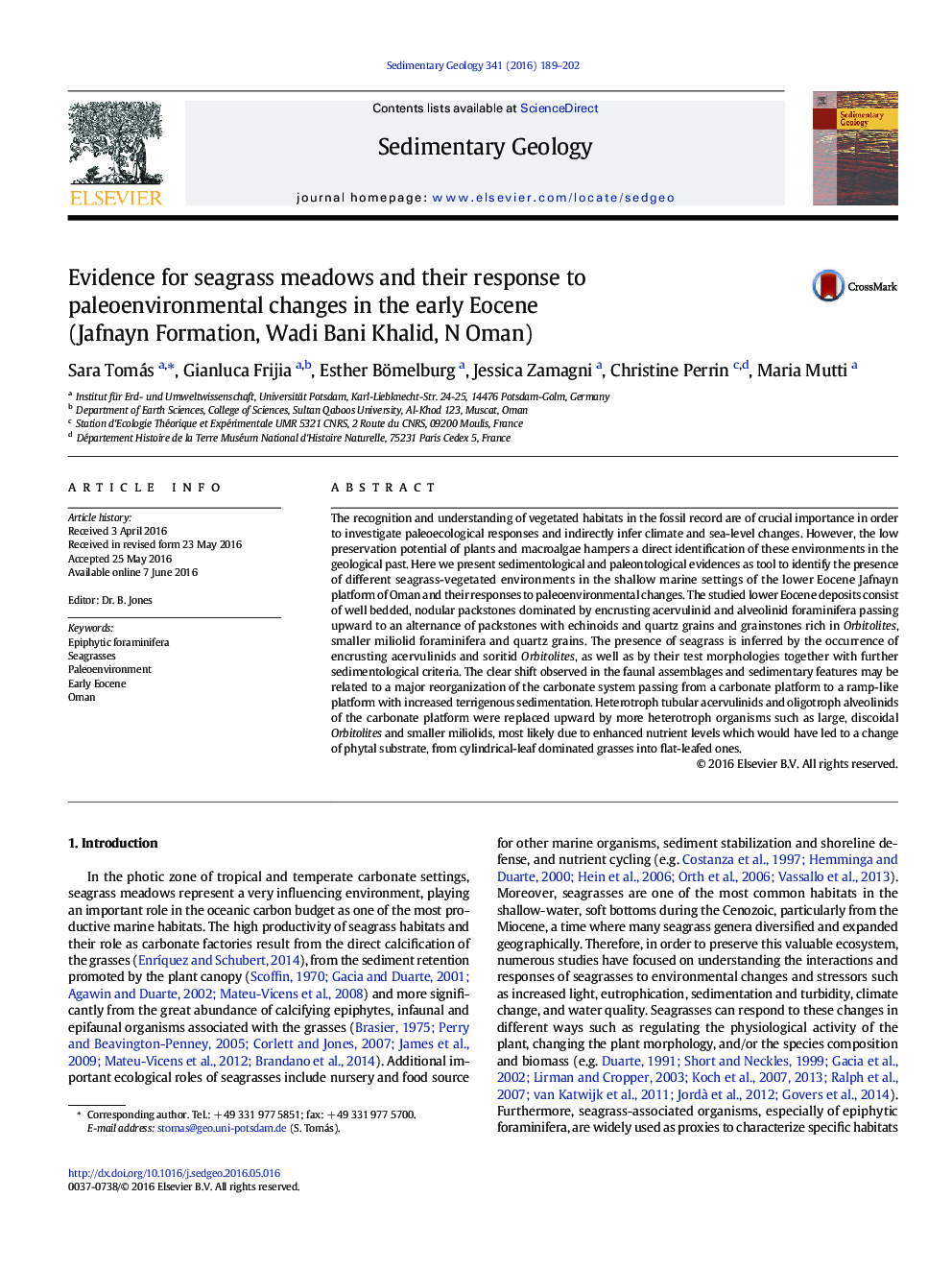| کد مقاله | کد نشریه | سال انتشار | مقاله انگلیسی | نسخه تمام متن |
|---|---|---|---|---|
| 4689012 | 1636022 | 2016 | 14 صفحه PDF | دانلود رایگان |
• Evidence for presence of seagrass meadows in early Eocene shallow water carbonates of Oman (Jafnayn Formation).
• Main indirect indicators of Eocene seagrasses are tubular and hooked acervulinids and large discoidal Orbitolites.
• Terrigenous influx and associated increased nutrients are reflected by changes in phytal substrate and faunal assemblages.
The recognition and understanding of vegetated habitats in the fossil record are of crucial importance in order to investigate paleoecological responses and indirectly infer climate and sea-level changes. However, the low preservation potential of plants and macroalgae hampers a direct identification of these environments in the geological past. Here we present sedimentological and paleontological evidences as tool to identify the presence of different seagrass-vegetated environments in the shallow marine settings of the lower Eocene Jafnayn platform of Oman and their responses to paleoenvironmental changes. The studied lower Eocene deposits consist of well bedded, nodular packstones dominated by encrusting acervulinid and alveolinid foraminifera passing upward to an alternance of packstones with echinoids and quartz grains and grainstones rich in Orbitolites, smaller miliolid foraminifera and quartz grains. The presence of seagrass is inferred by the occurrence of encrusting acervulinids and soritid Orbitolites, as well as by their test morphologies together with further sedimentological criteria. The clear shift observed in the faunal assemblages and sedimentary features may be related to a major reorganization of the carbonate system passing from a carbonate platform to a ramp-like platform with increased terrigenous sedimentation. Heterotroph tubular acervulinids and oligotroph alveolinids of the carbonate platform were replaced upward by more heterotroph organisms such as large, discoidal Orbitolites and smaller miliolids, most likely due to enhanced nutrient levels which would have led to a change of phytal substrate, from cylindrical-leaf dominated grasses into flat-leafed ones.
Journal: Sedimentary Geology - Volume 341, 15 July 2016, Pages 189–202
